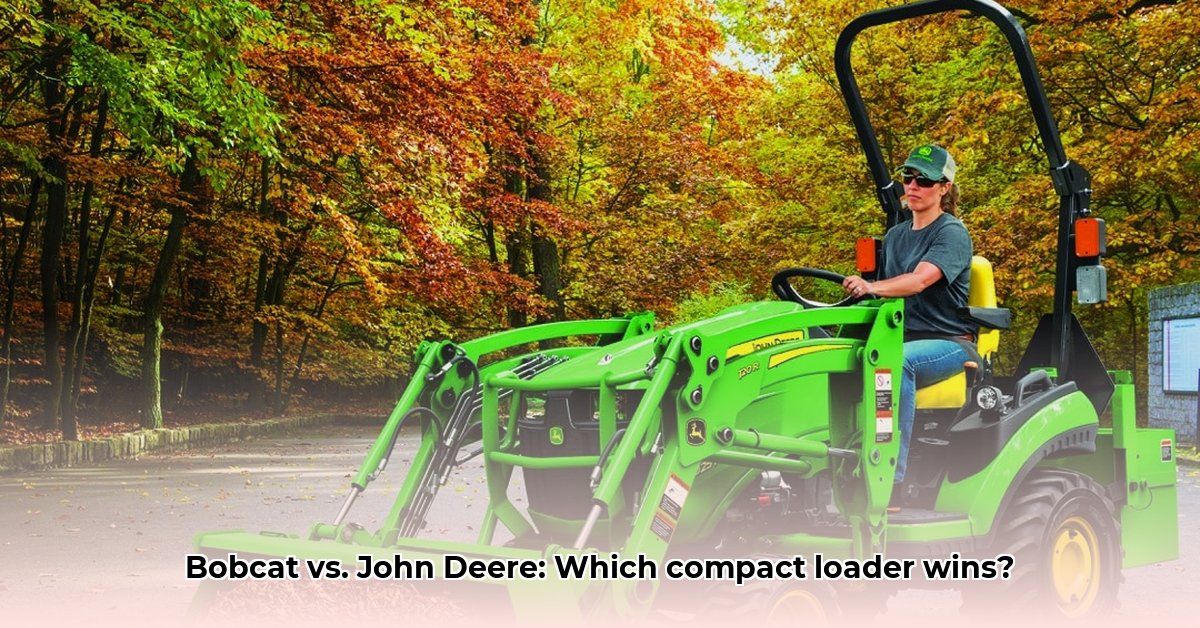
Choosing the right compact tractor loader can significantly impact farm efficiency and profitability. This comparative review analyzes Bobcat and John Deere offerings for 2025, focusing on key features and providing actionable insights for informed decision-making. However, due to inconsistencies in publicly available data, this review presents a preliminary assessment; further research including hands-on testing is recommended. For more information on Bobcat options, see the Bobcat Packages.
Power and Lifting Capacity: Brute Force vs. Smart Technology
Bobcat compact tractor loaders boast a horsepower range from 21 to 58 hp and lifting capacities ranging from 700 to 3,177 pounds, offering diverse options for various farm sizes and tasks. John Deere, while less explicit about raw horsepower figures, emphasizes its self-leveling loader technology. This system automatically adjusts the bucket angle, regardless of tractor tilt, potentially increasing lifting capacity by 20-40% according to John Deere's claims. This technology prioritizes efficiency, while Bobcat focuses on raw power across its model range. Which approach is superior depends on individual priorities. Do you need raw power, or does smart technology offer a better solution for your farm's needs?
Transmission Systems: Hydrostatic vs. Manual
Both manufacturers offer hydrostatic (automatic) and manual transmission options. Bobcat's higher-end 5000 series utilizes electronic hydrostatic transmissions, known for smoother, more precise control, particularly beneficial for delicate tasks. John Deere's focus remains on its self-leveling system, irrespective of transmission type. The optimal choice hinges on operator preference and the types of tasks commonly performed. Does the ease of use of a hydrostatic transmission outweigh the direct control of a manual system?
Beyond the Basics: A Holistic Perspective
A direct comparison between Bobcat and John Deere models is hampered by the inconsistent and incomplete nature of publicly available data. A definitive "winner" cannot be declared without access to comprehensive information on pricing, fuel efficiency, and long-term maintenance costs. This limitation underscores the need for further research to build a more detailed and accurate assessment. How much does the lack of readily-available data affect your decision-making process?
John Deere's Self-Leveling System: A Game Changer?
John Deere's self-leveling loader system is a significant differentiator, automating bucket leveling for increased efficiency and reduced operator fatigue. This feature simplifies loading and unloading operations compared to manually leveling the bucket. However, is this increased ease of use justified by its cost, compared to the broader range of options available from Bobcat?
Factors Beyond Horsepower: Enclosed Cabs, Climate, and More.
Beyond horsepower and transmission, additional factors deserve consideration. Bobcat provides both open-air and enclosed cab options, impacting operator comfort and weather protection. The choice depends on climate and personal preferences. An enclosed cab adds cost and complexity but provides superior protection from harsh elements. What is the ideal balance between cost, functionality and operational comfort for your situation?
Decision-Making Framework: A Step-by-Step Guide
1. Needs Assessment: Clearly define the tasks the tractor will perform and the size of your workspace.
2. Model Research: Compare specific models, not just brands. Focus on the models directly matched to your requirements.
3. Specification Verification: Scrutinize horsepower, lift capacity, PTO horsepower, and other key features. Verify data from multiple reputable sources, accounting for inconsistencies in publicly available data.
4. Long-Term Cost Analysis: Project fuel consumption, maintenance, and potential repair costs.
5. Hands-on Evaluation: Whenever possible conduct a test drive of each model to assess functionality and maneuverability. A test drive will provide critical insight not available from specifications alone.
Risk Assessment Matrix: Potential Problems and Mitigation Strategies
| Feature | Failure Likelihood | Severity of Failure | Mitigation Strategies |
|---|---|---|---|
| Hydrostatic Transmission | Somewhat Likely | Moderately Bad | Regular maintenance, prompt repairs, operator training |
| Self-Leveling Loader | Unlikely | Moderately Bad | Proper calibration, correct operation |
| Engine System | Somewhat Likely | Very Bad | Preventative maintenance |
| Three-Point Hitch System | Unlikely | Moderately Bad | Correct usage, regular inspection |
This analysis utilizes publicly available information. More comprehensive data, including hands-on testing and detailed specifications, is required for a definitive conclusion. Ultimately, your individual needs and budget should guide your decision.